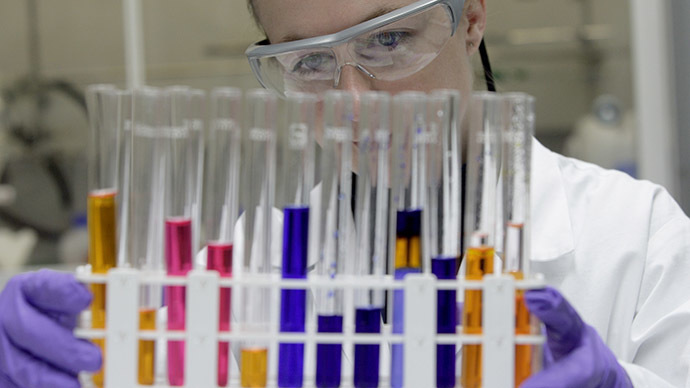Scientists make living cells levitate in possible cancer detection breakthrough

Scientists have for the first time managed to levitate living cells using magnets. Their findings could possibly create a revolution in diagnosing various diseases, including cancer.
The video of the levitation experiment, done by a team of researchers from the Stanford University might not look particularly impressive, being nothing more than green dots floating against a white background, but its implications could be enormous.
That is not the first project that involved levitating living cells, but all previous research involved magnetically levitated whole creatures. The study of levitation of living frogs was even rewarded with lg Nobel Prize, which is parody award for unusual achievements in scientific research.
But cells and microorganisms are different. A magnetic force for objects smaller than 20 microns is so low that it cannot overcome gravitational weight. A widespread levitation tool – injection of oxide particles – is also impossible: it is toxic for living cells.
READ MORE: Virus as medicine: Genetically engineered virus can cure cancer, scientist learn
Researchers solved this problem by manipulating with environment around the cells, not the cells themselves. They constructed a narrow channel filled with fluid between two long, thin toothpick-sized magnets. The fluid was doped with a highly magnetic rare-earth metal called gadolinium. The magnetic field is created in such a way that gadolinium was pulled downwards, thus pushing cells upwards.
In other words, scientists were able to create some kind of buoyant force which means that the height of levitation depends on cell’s density. When cells are as dense as gadolinium they stay in the middle of the channel. Denser cells levitate lower, less dense cells levitate higher.
That technique can be useful for sorting cells, which is very important for diagnostics and treatment. For instance, cancer cells levitated above healthy blood cells – paving the way to easier cancer detection with the help of simple blood test. Another example is using this method to distinguish red blood cells from white blood cells, which makes easier diagnosis a compromised immune system, which is indicated by a lack of white blood cells.
“Researchers could identify which individual cells—from a tumor or a strain of bacteria—survive a drug treatment and study them further, something that's not possible with current culture-and-stain tests,” Utkan Demirci, a bioengineer at Stanford University in Palo Alto, California, said about further applicability of the innovation.
Will Grover, a bioengineer at the University of California who invented another technique of sorting cells, believes that this new one has strong advantages.
“Density comes for free. You don’t have to do anything to the cells,” he said, “Science” reports.
“[My own] approach measures one cell at a time, so the new magnetic platform might have advantages for scaling up the process. So far, the setup can get through about 3000 cells per hour,” Grover added pointing out that the number could be increased to one million cells per hour.
The results of the study were published in the Proceedings of the National Academy of Sciences on Monday.












